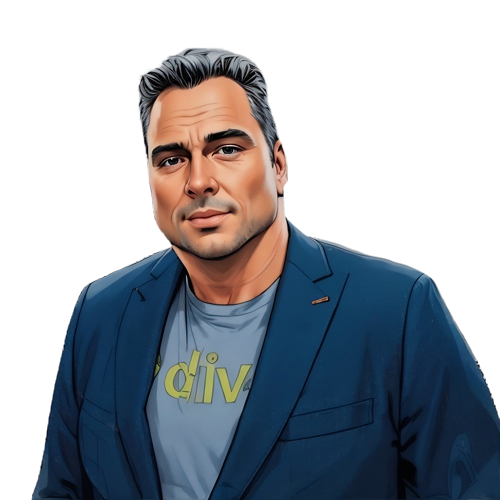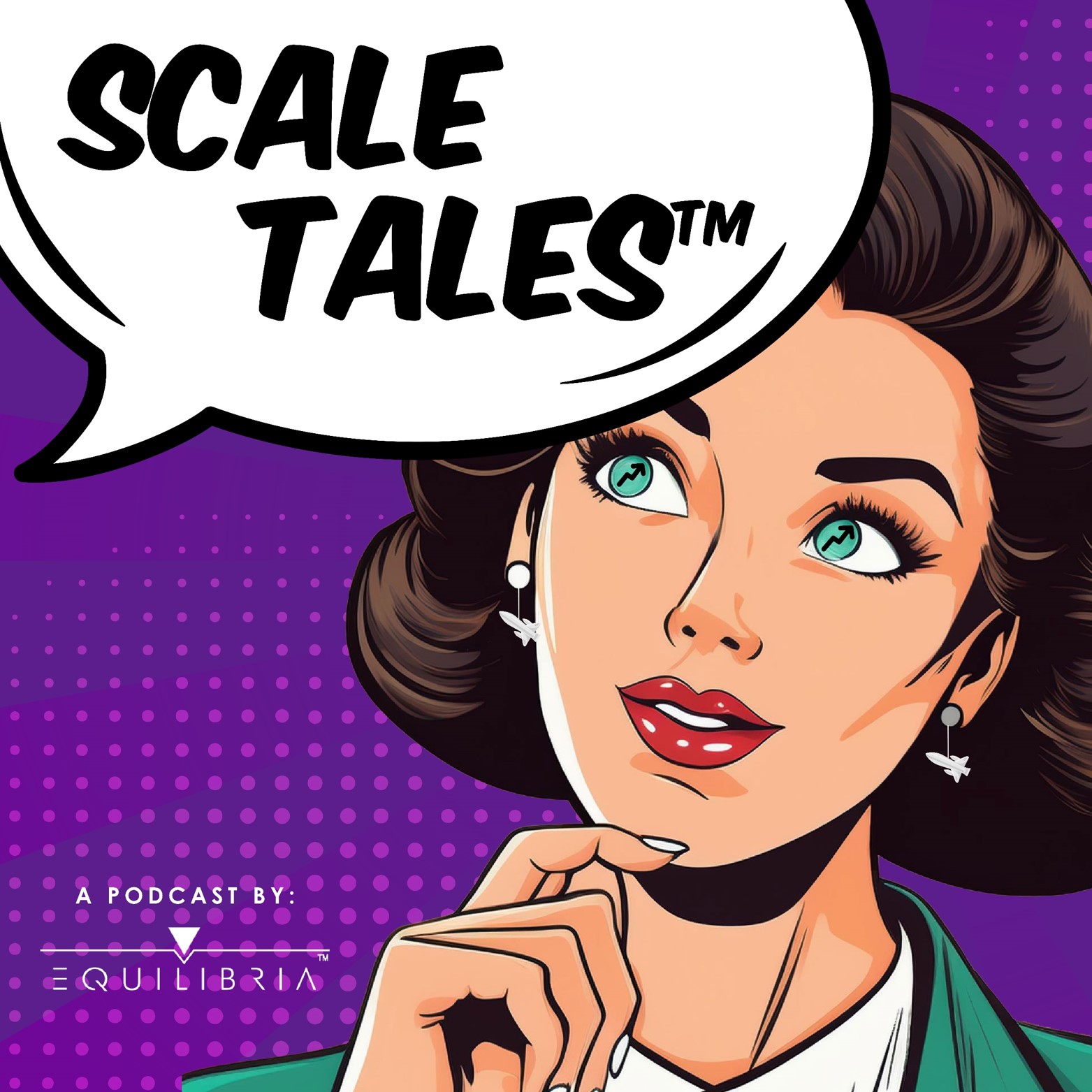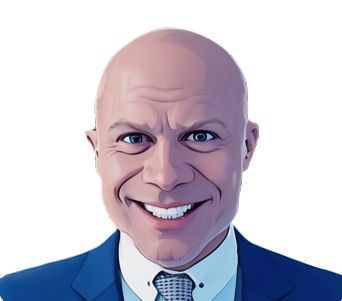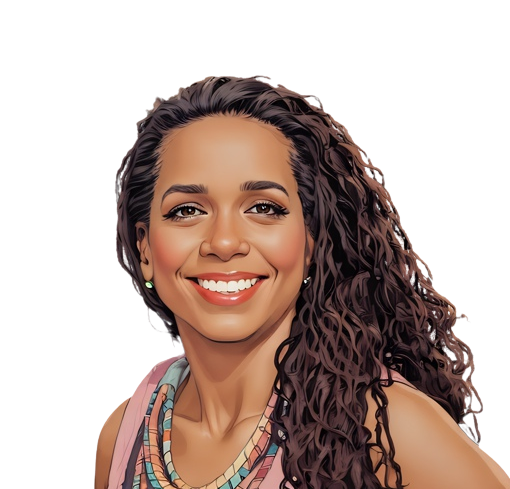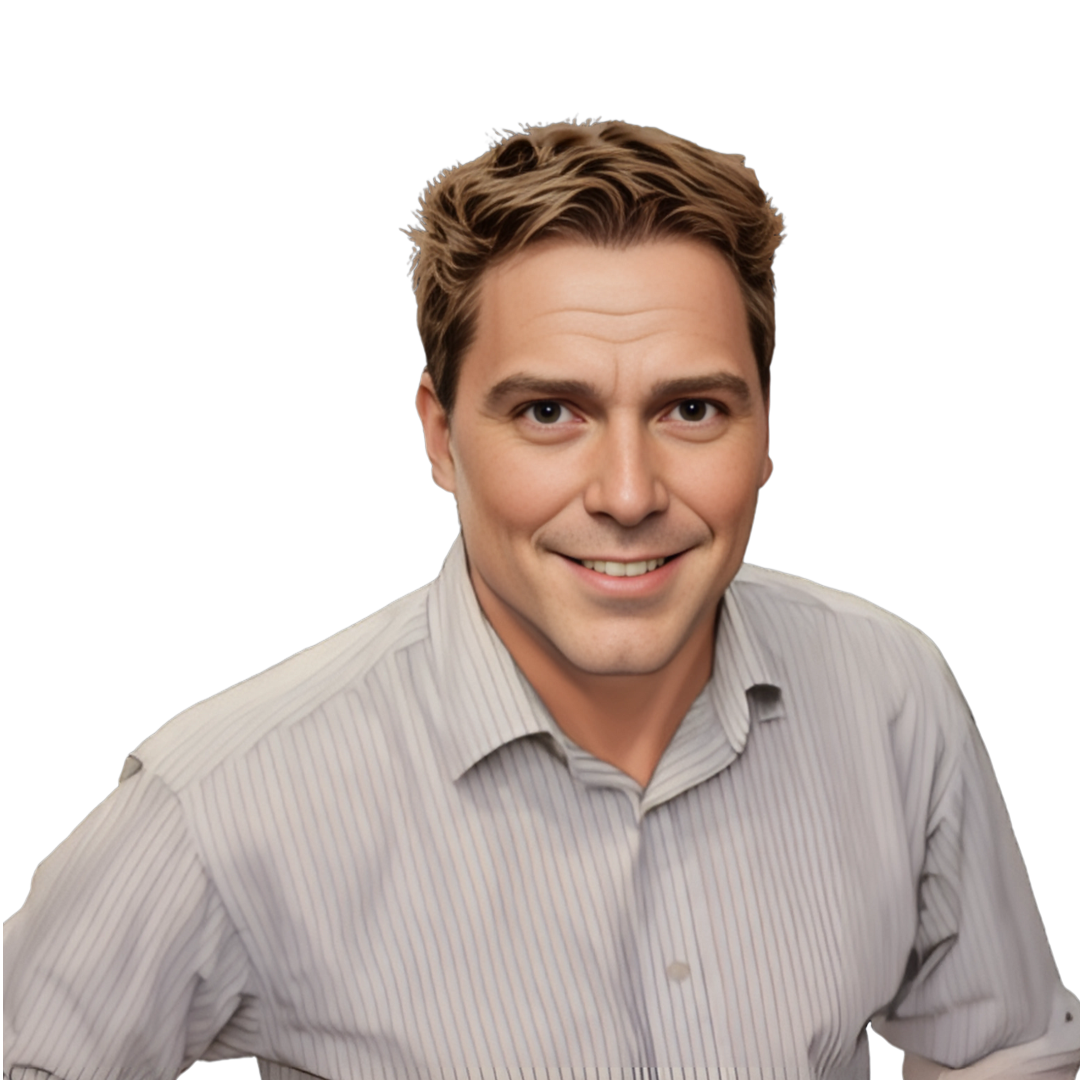Transcript
This podcast is brought to you by Equilibria, Inc. Did you know you can earn PDUs from listening to this show? It’s easy, accessible, and submitted directly to PMI. Keep listening to learn more.
Equilibria provides training to assist fast-growing companies to increase capacity and cash flow while operating at maximum performance. As a founder, leader, or project manager you know all too well that chaotic work environments aren’t sustainable. Visit EQBsystems.com to sign up for a free discovery call and start flowing today! EQBsystems.com.

“Now we have about 12,000 drivers on the platform and 85% of our markets are on a wait list. We don’t want to over saturate the amount of drivers. We have 18,000 drivers that have applied outside of those 12,000 active drivers just to get on the platform. So we’ve grown this ecosystem from one driver in Philadelphia delivering some chicken through aggregation partners, through a lot of pain, through a lot of failure, all the way up to these 170 markets with team members spread across four countries here to support the drivers out there delivering the most valuable orders for restaurants that exist.”
Welcome to Scale Tales – the business storytelling podcast where entrepreneurs, executives and experts share firsthand accounts of those magical moments when they achieved something bigger than even they could have imagined.
That person you heard speak earlier is our next guest. His story is one of resistance, persistence, pandemic-induced growth, and lots of failure and heartbreak along the way. And believe it or not, it all started with a cheesesteak. It really is true – you never know what or who will inspire your next great idea.
This is Ep. 39: How Chris Heffernan Grew the Dlivrd App to over 12,000 Drivers Across 150+ Markets in 10 Years

Hello, I’m Chris Heffernan, founder and CEO of Dlivrd. I’m currently in suburban Philadelphia, and this is my scale tale.
It all started on May of 2011. I was on vacation from my corporate job in telecommunications. I was in beautiful Delray Beach, Florida. Now, being from the suburban Philadelphia area, I am a connoisseur of cheesesteaks. So the saying is it all started with a cheesesteak. There was a restaurant on the strip there on Atlantic Avenue, it was Big Al’s South Philly Cheesesteaks. And if you’re from the Philly area, you know there’s a lot of impersonators out there in the Philly cheesesteak world.
I’m a firm believer that if there’s peppers on a cheesesteak, that is a sandwich that is not a cheesesteak. So I decided I was going to grab lunch and check out what Big Al’s was all about.
This is before Grubhub had its own drivers. DoorDash didn’t exist yet. Uber Eats, none of these funded delivery apps were around. You could order on GrubHub. if the restaurant had their own drivers already. Chinese food or pizza places is pretty much what dominated that website. So when I walked up to order my Whiz Whit, which is a cheesesteak with whiz cheese and onions, I saw a sticker on the window, and it said, we deliver with Delivery Dudes. And I remember asking Big Al, “What’s Delivery Dudes?”
And he told me about it. It’s what we know is DoorDash and UberEats today, where they take a commission from the restaurant and customers order from their website or app. And I thought this was great because we didn’t have this where I was from. Right outside the city, you could just get pizza delivered.
So after eating this delicious cheesesteak, which was a real cheesesteak, by the way. I decided to look a little bit more into this and I built a website. I didn’t know anything about website building. I watched YouTube videos and just trial and error. And I bought the code for a website that was made to sell shoes, an e-comm store. But instead of ordering a pair of Nikes size 10, I made it where you could order a burger at American Cheese and I started driving around in my lease Toyota Camry delivering some orders. And it started with just four restaurants.
Chris was driving around in his leased Toyota while he was working at a telecommunications company. But this work arrangement wouldn’t last long.
I got this new boss and he was kind of a jerk. He came down from New York and replaced my district manager and started quoting Sun Tzu, the Art of War, and talking about cutting the concubine’s head off. And just like a cheesy cop movie, I busted into the office. But instead of whipping out my gun and badge and putting them on the table, overly dramatic. I took out my company expense card and my iPad and basically was like, I’m out. So now I’m a full-time entrepreneur with just my 401k that I cashed out. Trying to make things work.
Chris was determined to succeed. His new food delivery business had to work. After all, he quit his job. He slowly started building his roster of restaurant clients until he had up to 50. Of course, anytime you’re starting something new people will tend to do one of three things: 1) they’ll think you’re crazy and tell you to go away, 2) they’ll think you’re crazy, but they’ll take a small chance on you, or 3) they like your radical idea, and actually give you their business.
Uber Eats and DoorDash, they fetch 20, 30, 35% of orders. My first restaurants gave me 8% because there was no concept of this. A lot of restaurants just laughed in my face like, ha, ha ha. You think people are going to do this? I’ll give you 20% of my order so you can give me that. Like, no.
When I was trying to get drivers, it was like, I’m not going to use my own car to make money. Who would do that? Because again, these apps weren’t really there. We grew to a small team of independent contract delivery drivers running out of the back of my house.
It was painful making a couple bucks on each orders. Customers were complaining, restaurants weren’t interested. Trying to grow the footprint was hard because the bigger the area got, the longer delivery times were, the worse the food tasted, the more drivers you needed. So scaling out an on-demand delivery business where you had to market to drivers, market to restaurants, market to customers, it was a lot of work for just a solopreneur like myself.
So we’ll fast forward a bit to 2018, which is when dlivrd came to existence. I was still out doing deliveries and I ended up at a Boston Market. Boston Market is largely gone at this point, but they were arguably the biggest player in the catering space. We’re not talking about a burger to a person, we’re talking about a burger bar to a whole office. So they’re sending their rotisserie chicken out places. The manager at this location is, you know,
“Chris, it’s great that you’re bringing me these $25 orders. But what I really need help with is getting these $250 orders out for these pharmaceutical reps. They all come in around the same time. They’re just weekdays and they all go in different directions. We have some of our own drivers that we send out, but it’s really hard to make this work.”
And one of those light bulb moments happened where I’m like, “Wow, I don’t have to worry about acquiring the customer. You guys have the customer! I don’t need to worry about credit card fees or chargebacks because you’re processing the payment. I just need to be the logistics engine. I have drivers, I can get them to pick this up and drop it off and we can set it up.” It was great because at this time, DoorDash, UberEats, all these funded delivery companies are just destroying my little food cab business running outside of suburban Philadelphia to the point where like if you were on the DoorDash app or the UberEats app to sign up as a driver, they identified my little area as a hot zone, a place where demand was high. I unknowingly primed the market for the consumers to be comfortable on ordering from an app and getting everything but pizza delivered.
Instead of just like giving up and being like, this is horrible, I decided to jump into this catering space and really focus on the Boston Market. That one manager hooked me up with the regional manager. They got me six stores in the Philadelphia area. So as I’m winding down that on-demand business, we’re growing this catering business and it was perfect. On-demand is long days and all that work. Dinner rushes on Friday and Saturday nights are the busiest. The Super Bowl happens, you’re super busy. Mother’s Day, Valentine’s Day, people are ordering on demand, but catering is Monday through Friday lunchtime.
I’m sure Chris never imagined that a chance conversation with that manager at Boston Market would lead to a completely new business model, one that offered higher returns for less grueling work. A model that…he could scale. And though the catering business also has its peak periods, Chris had a good feeling about hitching his proverbial wagon to this overlooked market. As for the business infrastructure, he had some of the elements in place. He had processes that could be tweaked and he had the people.
he problem now was there’s no technology that handled next day prescheduled deliveries. I built my own tech once before. I figured I would try and figure it out again. So I bought some base code from a firm in India that built on-demand delivery software that was open ended. And then I went on Upwork and I found some developers all over the world, mostly like Eastern Europe, India or Pakistan. And that’s cheaper labor than in the US for tech work. And we customized this software. Not 100%, not enough to call it our software, but to work for what I needed to be able to handle these prescheduled catering orders.
Once Chris got the third element of business infrastructure in place, the technology, he was ready!
Now I got the software, I got my first client, I got these six Boston Market stores. I needed to figure out how to get more locations. I didn’t have a big marketing budget cause I had a failing business that sucked most of its profits back into itself. I went on Craigslist and I went into the jobs board and I clicked catering delivery driver. I started emailing and calling every restaurant that had a post in Philadelphia for a catering delivery driver and saying,
“Hey, I see you’re looking for a catering delivery driver. How about 100 drivers instead of 1? How about software that your drivers can see or your customers can see where the drivers are at? We’ll send you a picture after we set it up so you can make sure that your brand standards are being upheld. These are valuable orders for you and they’re hard to scale.”
And we got a few customers out of that in Philadelphia, one of which we still work with today. Sweet Lucy’s Barbecue. One of my favorite places for barbecue. The ribs are absolutely delicious. So we found them and now we’re proving our proof of concept. This works. Restaurants are using it, we’re taking their most valuable orders, and we’re doing it really well. The biggest problem for me was I’m still in that driver mentality. I’ve upgraded from that lease Toyota Camry. I think I have a Jeep Grand Cherokee now, so I have more room for more orders. But the problem was I’m running the business. I’m reaching out to customers, I’m doing the dispatching, assigning the orders, working with the tech team. But when a driver would bail on an order, not show up for it, or text in and say they can’t do it, I’m jumping out of the office and running to take that order. I got too consumed with being in the business than growing the business.
The way to really scale that out and to get out of my own way was to open up in another market. So I decided to start looking in Baltimore, searching Craigslist in Baltimore saying, “Hey, how about 100 drivers instead of one? We’re doing this in Philadelphia. Here’s a reference. Check us out.” Because if I’m at my office in Philadelphia, I can’t run out the door to save that order in Baltimore. So that really helped me build systems and build the way to scale the program by not being able to save every order and being okay with failing at some things and really excelling at others.
his is interesting – by Chris intentionally expanding into Baltimore, he, and the future drivers he hired, were forced to rely on systems and processes and not on Chris to rescue customer orders. Just to put this into context for our listeners outside of the U.S., Baltimore is a city in the state of Maryland. Philadelphia is in the state of Pennsylvania. The distance between these two cities is approximately 110 miles or 177 km. But, as it turns out, having this kind of distance was exactly what was needed because it led Chris to some other discoveries.
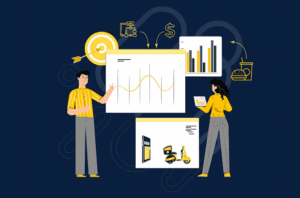
Selling to restaurants is hard. Restaurants are probably the most called upon business to be sold. Point of sale systems, credit card machines, linens, food providers, anything you can think of, people want to sell to a restaurant. So there’s always someone knocking at their door. To be able to grow dlivrd into the 170 markets across US and Canada that we operate now in 2025, back in 2018, it needed a different strategy. It wasn’t going to be a door-to-door or one-by-one sale. I started looking for aggregators. So companies like EasyCater where people order catering from Olo, who manages online ordering for business for restaurants, as well as different point of sale companies like Square and Toast and their ordering partners.
Instead of going to a thousand restaurants door by door, I would just go to that aggregator and be like, “Hey, let’s integrate. This is what I offer.” So now I don’t have to go and sell per se. I can just say, “Hey, we’re in your tech stack and when you have an order that needs to be dlivrd, you can choose us or some of these systems like the EasyCater, they even just had it where you tell us you can’t deliver and we’re gonna route you to a delivery partner. We started seeing instant demand from that.
We’re firing strong in Baltimore and Philadelphia and it’s like let’s add DC. I’m still driving to these markets to onboard these drivers. I’m going there, I’m meeting with them, booking a conference room at a WeWork and showing them how to use the app, giving them delivery bags, same thing.
In case you’re wondering, D.C. is Washington, D.C., the capital of the U.S. That location as well as Baltimore and Philadelphia are all along the eastern coast of the U.S. Expanding to the D.C. market was great, but Chris had a grander vision – to setup from one coast stretched across westward to the other coast.
I didn’t want to just be a northeast regional delivery provider. So I went from Philly, Baltimore and D.C. and decided my next logical move – San Francisco. It forced me to build an online on boarding with video tutorial and a knowledge check and really making sure that the drivers are learning the way to best perform on the platform for them to make the best money for the customer to get the best experience and for that brand to have the best driver capable because they’re trusting them with on average a $350 order.
Chris’ hard work paid off. Gone were the days of scrambling to fulfill orders, and rescue orders in some instances. He had binding partnerships with the catering aggregators, a growing team of drivers, a solid onboarding process, and the technology that could scale along the way. Then, in 2020, just as he was getting
his stride, the unexpected happened – the COVID-19 pandemic.
pandemic? Restaurants and businesses. Well, where did all my orders come from? Restaurants. Where did all my orders go? Businesses. We saw a huge slide in revenue. We fell back to about 40% of revenue. We were still a small team in the office. There was four of us, two people we laid off because we just needed to keep things lean.
we decided that if we’re doing 40% of our revenue in 20 markets, if we open in 40 markets, we should be able to hit 80% of what our revenue once was. So that’s what we started doing. Just going to our integration partners and saying, hey, we’re available in these other zip codes, let’s try and get some volume drummed up. And luckily we had some really great integration partners that were willing to work with us and push some revenue our way because they wanted us to succeed. We were doing a good job for them in these other 20 markets.
The pandemic was a turning point for dlivrd. Once again, Chris found himself forced to rethink and fine-tune his business model. It was a challenging period, but instead of reducing their footprint, Chris made a bold move to expand it even more. And it paid off because in the end, they emerged stronger.
When we slowed down, we were pushing $2 million in revenue. But the way we were doing it was completely flawed. We were copying and pasting orders from one portal into another, manually processing payments, manually assigning orders, doing all this stuff that we could do with 20 markets. And maybe, I would only have a 16-hour workday. But this break in the business allowed us to go back and kind of reinvent and take some time to build what we needed. Time we otherwise wouldn’t have had because we would have spent that time just growing the business. So we took this lull to build automations to take that manual away from entering orders to get the system to assigning. And those core changes really groomed what we’ve built today for dlivrd.
The other problem we were running into was paying these drivers. Gig workers demand to be paid instantly, right? Fast pay is not a perk, it’s a benefit in the Gig World. There is no payday for gig workers. If they wanted a payday, they would have a regular W2 job and go into the restaurant every day and get their paycheck every two weeks. So I’m using my personal credit cards to pay our Stripe account to pay the drivers the next day for the delivery. So drivers are doing a delivery on Monday, getting paid on Tuesday, but I’m not getting paid for 15 to 45 days for that delivery, depending on the terms from the client. My credit score is fluctuating 100 points because my cards are maxed out. And then I pay it all off. But every dollar that the company makes in profit goes towards paying the next delivery. So theoretically, the company’s profitable. We’re making money on every delivery, but we’re spending that money to fund the next round of deliveries. It was bad.
Bad, but in a good kind of way if that makes sense. That cash flow crunch forced Chris to get more creative in processing payments. Before he tells that part of the story, I’m curious – do you like what you’re hearing so far? Chris is quite the storyteller isn’t he? But guess what? If you’re not a member of our Smooth Operator community, then you’re going to miss out on his whole story. That’s why I encourage you to go to Scaletalespodcast.com to sign up for a membership so that you can see the full video version. Okay, back to Chris and those credit cards…
We couldn’t scale past a certain point cause I only had so much of a credit limit. I couldn’t get more credit cards because people were looking at my credit score like,
“Bud, you’re a 550 right now. We’re not going to give you a card.”
“No, no, I’ll be a 670 on the 19th. Just refresh it then.”
And luckily, I came across the startup that handles payments for gig workers. They were just getting going and they threw me a lifeline and were like,
“We see that you’re profitable, but we also see that you can’t hold profit. We’re going to handle your payments. Take that away from Stripe. We’re going to give you a credit line. But the second you don’t pay that credit line, we are turning you off!”
I never missed a payment. I still work with that payment processor today. And we process over $2 million a month to our drivers. So that relationship really paid off back then, but it was a struggle.
A struggle that Chris endured and eventually conquered. By this time, dlivrd was in 40 markets across the U.S.
We bring the employees back that we laid off because the volume’s coming back with the new markets. Once the pandemic starts lifting, we start seeing growth, almost uncontrollable growth. We 4’xd revenue from 2020 to 2021, then 3x from 21 to 22, and then 3x again to 23. It was just insane because after the pandemic, it stopped being a perk to offer food to employees and became a requirement. If you’re coming back to the office, we’re going to feed you. We saw addresses go from once a month, as far as frequency, up to five times a week. Especially as people shift still from remote workplaces into full time back in the office or from remote to hybrid.
These partners, instead of us going to them, partners are coming to us.
“Are you available here? Can you open here? We have these clients that want it here.”
It was great. Up until March of two years ago. 2023, we still had no salesperson. All of our sales came from our aggregators sending us orders. Then we would just mentioned like, “Hey, you do my deliveries for so and so. Can you take the ones that we get ourselves? Can you take the ones we get from this other platform?” Which then allowed us to bring restaurants on the platform directly and then it allowed us to get access to those other aggregators where they’re like,
“Can you deliver it for this software?
“Yeah, but we need an integration. Oh, let me introduce you to my account rep, or let me introduce you to this executive.”
So we really got lucky in scaling out the business in that sense where we didn’t have to fight for customer acquisition. A lot of the customer acquisition just kind of fell in our lap and we grew that out. The problem then became we needed technology to manage orders for these brands that give us them directly because before it all came in through the integration partners, so the technology was handled by them. So now we had to go out and rebuild technology to give the restaurants a merchant app where they can go in and they can track their orders that they put in directly with us. Then they can also, scale their business that way, where before we didn’t have that because it was all just handled elsewhere
Do you remember Chris mentioning that off-the-shelf tech that they customized years earlier? The time finally arrived where they had to build their own solution.
The whole goal is building technology that we own to get from the point that the driver says, I’m interested in taking a delivery to the point that that driver is paid and hand that all in our ecosystem. So, we started building that out in the end of 2023, beginning of 2024, we anticipated six months to get our driver app completely built by us. About 14 months later, we’re finally releasing this driver app. Everything takes longer than you anticipate.
Whatever your engineer says, double it. And that’s probably what the actual build time is. Now we’re focusing on building the driver app, getting that up and ready, using the things that we built back in 2020, like an algorithm to assign orders based upon skill set. So we look at these Door Dashes, UberEats, Lyft. When they pair you with a driver, it’s paired on the person that can get you to the quickest deliveries. But for these catering orders, a person that has a Mini Cooper isn’t going to take a $2,000 order. It’s not going to fit in their car.
If the order is going up a service elevator, you can’t carry that. It’s a lot. You got to have a cart. So we start building profiles for all these orders, depending if it comes from a QSR or fine dining, if it’s fast food, if the delivery instructions say service elevator and it looks at the type of car the driver has versus the subtotal. Basically we “Tinderized” it. What I mean by that is we built the profile for the order and then we have a profile for the driver and then we match them because it’s in advance. We don’t need it to necessarily be the fastest, we need it to be the right driver. So the system’s going in and saying, “I matched you to this order and if you think you match to it, swipe right.” Once that driver swipes right, it’s in the wrap. So we’re building on these fundamentals that we started in 2020, in 2024, as we’re building this driver app, as we’re building this merchant portal.
In case you’re wondering what “Tinder” is, it’s a dating app. Now, I’ve never used Tinder, but I’ve certainly heard of it. And, according to my quick AI search, it works by a new user creating a profile, swiping to the right on potential dates you are interested in, and left for those you are not. From there, if someone else with a profile on the app also swipes to the right on your profile, then you are officially matched, at least on the app and you take it from there.
So, when Chris said that he and his team “Tinderized” their driver app, he’s indicating that dlivrd’s drivers each have a profile, and based on certain settings like location, distance, vehicle type, and experience, they can potentially be matched to a customer order
This is not only impressive, but it’s right on time because, as of this recording, dlivrd has 12,000 drivers on their app! And believe it or not, there’s even more to Chris’ scale tale. Coming up after the break he’ll tell us more about their proprietary technology, some key leadership lessons he’s learned throughout scaling, and his advice for building a team on a limited budget. You don’t want to miss it!
Are you a certified Project Management Professional? Just imagine, you can literally listen and learn while you earn credits. Yes, even while you’re taking a long
walk, driving to or from work, even while you’re on an airplane. The good thing about our podcast episodes is that you don’t have to watch them in order to earn your PDUs.
In three easysteps – Visit ScaleTalesPodcast.com, sign up for a membership, take a short quiz and we’ll submit your credits to PMI. Yes, it’s really that simple and all at a price that makes this information accessible wherever you are. No gimmicks, no games. It’s really that simple! ScaleTalesPodcast.com.
Welcome back! Before the break, we met Chris Heffernan, the brilliant mind behind dlivrd, an international last-mile omni channel logistics and technology company for restaurant catering, on-demand, and same-day food delivery. And to think, it all started with a cheesesteak and a humble, yet dogged determination to succeed against encroaching competition. Chris was just starting to tell us about a driver app that they built along with a merchant portal. Where will this lead them and how will it enable a more sustainable scale? Here’s Chris.
Finally, by summer of 2024, our customer service dashboard is 100% ours. By the fall, we’re releasing the beta versions of our driver app by the beginning of 2025, we’re releasing our full-blown merchant app and we’re giving access to all these brands to be able to manage all their orders not just their catering orders. They can see their on� demand orders, they can see anything that touches off premise in here. So now we have that ecosystem dreamed of in 2023 is finally done by 2025, all while still growing in new markets. Working with those integration partners, getting these things up and running.
Now we have about 12,000 drivers on the platform and 85% of our markets are on a wait list. We don’t want to over saturate the amount of drivers. We have 18,000 drivers that have applied outside of those 12,000 active drivers just to get on the platform. So we’ve grown this ecosystem from one driver in Philadelphia delivering some chicken through aggregation partners, through a lot of pain, through a lot of failure, all the way up to these 170 markets with team members spread across four countries here to support the drivers out there delivering the most valuable orders for restaurants that exist.
We’ve divvied up 90% of our is catering or food related, about 10% in e- comm or routed parcel delivery. So a small percentage of that but still focusing on delivering catering orders or high quality earnings to drivers on our platform. It’s been crazy. But we’re still going and we’re hoping to grow into some more markets, get some more market share, more integration partners and really help restaurants succeed in a post-pandemic world.
What a story! There are so many follow up questions to ask. I know I’ve been joking around saying dlivrd all started with a cheesesteak, but that actually wasn’t the first food-delivery company that Chris started. It was Food Cab. What happened to that company?
Food Cab was a failure. There are certainly small delivery services like Food Cab that exist, but they operate at such a minimal scale. They’re in towns really big on supporting local, or that entrepreneur. That’s their job. Monday through Sunday, 10 to 6. I think it got to a point with me where I was like the juice isn’t worth the squeeze kind of mentality and pivoted to this other model and we rebranded.
We closed that company and then opened up dlivrd and I wanted to go with something not food centric, because I didn’t want to be pigeonholed into food delivery, though I basically still am. I wanted the ability to have a broader audience for delivery.
That explains why, when I did research on dlivrd, I noticed that the company is described as a “last mile omni-channel logistics and technology company.” This also made me wonder what role did Chris’ background in telecom play in his career as an entrepreneur?
I think the biggest thing that did it for me, when I first started working, I worked in retail with cell phones. I needed to adapt and learn technology at a rapid scale. I was there for nine years left in 2011. So a big time for cell phones, from flip razors to the first iPhone launch. I saw that all. I had to constantly adapt with technology. So I think that kind of subconsciously prepped me for life in the technology space.
Working in retail for the first stint was people. I needed to be able to interact with people. I needed to sell to people. I needed to have a personality.And then as I grew with the organization and grew into management and then grew into training and wore these different hats, those kind of skill sets helped set me up for a lot of what we do at dlivrd, and also a lot of what we don’t do. Don’t want to be too corporate and ridgy. Don’t want to be the boss that quotes Sun Tzu in the Art of War, right?
So I took a lot of good stuff from that time in corporate America and brought it here. Thinking about, our U.S. team, there’s five guys that I used to work with at AT&T that work with me now at dlivrd.

Hiring people you’ve previously worked with is a great way to start building your team. After all, you are already familiar with their work ethic and style. We’ll come back to that, but first Chris mentioned not wanting to be “too corporate.” He mentioned the ancient Chinese author Sun Tzu’s book, The Art of War and that boss he once had who misapplied some of the concepts mentioned in the book.
Yeah. There’s value to the Art of War. But when you use it in the wrong direction saying to get your employees in line or we’ll chop their heads off. You’re leading by fear. That’s not my way.
This is interesting because there are some leaders who prefer their teams fear them rather than respect them. They’re convinced this is the only way to get things done, especially if you want to scale. But Chris has proven this wrong. He’s successfully built a team that blends past experiences with new innovations.
The four employees were in the beginning days. Now it’s a team spread cross four countries. But the first hires were actually delivery drivers. My sister’s best friend was a gig worker and driving for me and she became one of the first ones to move into the office. And she’s still with the company today. She works on the client experience team and basically is the brains of that operation because she knows the integrations and she knows the system so well. She’s the first person clients interact with. The second hire was her friend who was working part time on the platform. And then it kind of grew from there.
Now we have an office in suburban Philadelphia. There’s about 20 people in that office. And it ranges from quality assurance to marketing to finance, to leadership like myself.
We have a call center in Colombia. We contract out with a company down there. There’s about 48 workers there. That’s our main support for the restaurants, for the drivers, some of the finance teams some more marketing as well.
Our development team is based in Pakistan. We have eight guys who work on the team exclusively for us, based over in Lahore. One of them is the guy who helped build all the main stuff for our system back in 2020. We’re still working with it today. One of our operations leaders, she’s based in Madrid, Spain. It’s nice because her middle time zone puts her between the tech team and the operations team. We’re some 100 employees across four countries, supporting the drivers, the restaurants, and just making things happen.
And if there’s one thing we’ve learned from Chris it’s that he definitely knows how to make things happen! Unfortunately, we have to start wrapping up this scale tale, but before we do Chris has some resources and advice to share with you.
I think the biggest resource is, honestly, yourself. You as the entrepreneur and your mindset. The biggest thing that 2020 did for me was shift how I was thinking about doing things. And I kind of coined this phrase, “Automate what you can so you can humanize what’s important.”
And that’s what I did. I invested a little bit into labor cost and said, alright, I’m doing these, repetitive tasks. And, yeah, it’s cheap and it works, it’s scrappy, but let’s automate this and let’s go on Upwork. Let’s go on Fiverr. Let’s find somebody to automate this, build a scripting platform, build a tool, do something so I don’t have to spend two hours doing this task. I can spend those two hours connecting with the workforce, in my case, the drivers. Or I can work on connecting with my clients and really humanizing the important part of it, because something like assigning orders, paying drivers, entering information into a spreadsheet, all these things can be done in the beginning.
As an entrepreneur, you might not have the money. I didn’t have the money to build a system. I didn’t have any venture capital dollars to build an app or an MVP or hire meaningless staff. So every minute counted. Changing that mentality, getting those tasks off my desk, off my team’s desk so we could focus on what mattered, is really what helped fuel the growth.
So I think it’s kind of recognizing what needs to change and then having the umph to change it and invest a couple bucks in those platforms. So I guess my tip is more of a mindset shift than a resource. But then committing yourself to finding those resources and betting on yourself.
With all the hard work, the sacrifices, the sleepless nights, the friends and family who think you’re absolutely crazy for leaving a good job to build something from scratch. I asked Chris, what’s the payoff?

There is no room for doubt. I mean, everybody question, what are you doing? You deliver food? That’s not a real job, right? My neighbors actually thought I ran a brothel at the very beginning because cars were coming in and out of my house, drivers were coming and dropping off, like, bags or dropping off money or whatever
So all these people always wonder, “Why do you work 16 hours a day? Why can you not pay your bills?” You know? And I mean, yeah, that was the case, especially for the dlivrd business in, like, 2018-2022. But now I’m trying to get to 40 countries by 40. I turned 40 in two weeks. I went to Southeast Asia for two weeks and hit six countries, and I can work anywhere my laptop is.
So you just have to be focused on the future and focused on what you can do and know that the limit is as much as you want to put into it, and then you get that out of it. Everybody’s going to have a reason on why they shouldn’t start a business or why they should stop their business. People have kids, you know, like, you got to buy a house, you got to do these things. But there’s room for both in this world, but there’s no room for self-doubt
One of the things I learned early on was the importance of adaptability. When we started, the market was very different. We had to pivot several times to stay relevant. I think that’s a crucial lesson for any entrepreneur. It’s not just about having a great idea; it’s about begin able to adjust and evolve as the landscape changes. If you don’t, you risk becoming obsolete.
When we first launched, we were focused solely on food delivery. But we quickly realized that there was a demand for broader services. That’s when we decided to expand into other areas, like grocery and retail delivery. It turned out to be a pivotal moment for us. Looking back, it was a bit daunting, but it was necessary. The competition was fierce, and we needed to differentiate ourselves. By broadening our services, we were able to capture a larger market share.
Another key factor was leveraging technology. My background in telecommunications really helped here. We used tech to streamline operations and improve customer experience. It was all about efficiency and scalability. Speaking of scalability, we also had to think globally. Expanding beyond our local market was essential for growth. We opened offices in strategic locations worldwide, which allowed us to operate 24/7. This global presence was crucial for our success.
In summary, adaptability, expansion, and technology were the pillars of our strategy. They enables us to not only survive but thrive in a competitive market.
Thank you for letting me come on and tell my story.
No Chris, thank you! He turned skepticism into success and although his entrepreneurial journey began with a cheesesteak, there’s nothing cheesy about his success. He’s proof of what can happen when we get out and observe our surroundings. It can be our greatest classroom. Speaking of which, here’s some additional lessons learned from Chris:
- Be comfortable in the pivot. Business plans can change. By switching from 1 100% on demand model to catering via aggregators, Chris created a Blue Ocean.
- Necessity is the mother of invention. When the technology for he and his team to carry out their vision didn’t exist, they created their own.
- Job boards can be a viable source of customers, not just employees.
- Leveraging multiple locations may be the thing to force you to design processes & Systems that don’t depend on you or one other person.
- Look for verticals and aggregators in your industry.
- Scale down to scale up. Take advantage of seasonal slumps or slow periods in business to work on things like process improvement projects and building stronger business infrastructure.
- Projects can take longer than anticipated, especially when prototyping and testing are involved. Always factor in contingency for budget and time.
- Ask yourself – how can I retrofit another company’s business model somewhere and apply it to my organization and build a project around it to ensure it gets implemented? Is there a way for you to “Tinderize” it?
- Remember, the only limitation is often your mindset. It is possible for a small business to operate on a global scale.
A special thank you to Chris Heffernan for sharing his scale tale with us. You can access links to the resources he shared in this episode’s show notes at ScaleTalesPodcast.com. Again, that’s ScaleTalesPodcast.com. I encourage you to follow Chris on social media too. You never know, you may even be able to meet him and have one of those authentic Philly Cheesesteaks
As a reminder, we offer live webinars where you can learn how to do things like apply Blue Ocean Strategy concepts to make competition irrelevant and automate project management to implement strategy. But that requires a membership which starts at only $9.99 per month.
In fact, if you are a PMP interested in earning a PDU for listening to this episode and others, then you can also visit ScaleTalesPodcast.com. Once you’re there, click the button that says, “Get CEUs/PDUs Credits,” sign up for a membership, and we’ll submit your earned credit to PMI for you.
Thank you for listening! If you learned something valuable from this episode, please leave us a five-star rating and review wherever you’re listening.
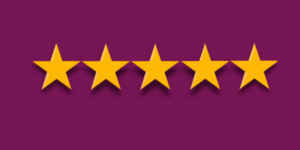
I’m Alicia Butler Pierre and I produced and narrated this episode. Additional voiceover by Clarence Levy III. Audio editing by Olanrewaju Adeyemo. Music production and original score by Sabor! Music Enterprises. Video editing by Gladiola Films. Show notes by Hashim Tale.
You’ve been listening to Scale Tales, a podcast by Equilibria, Inc.








